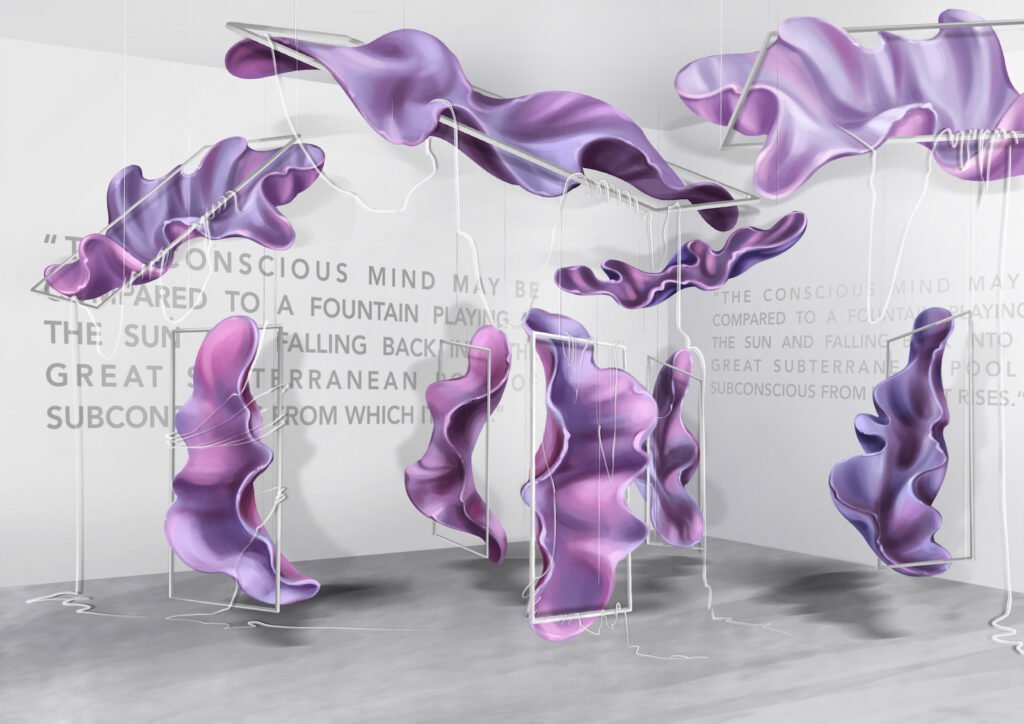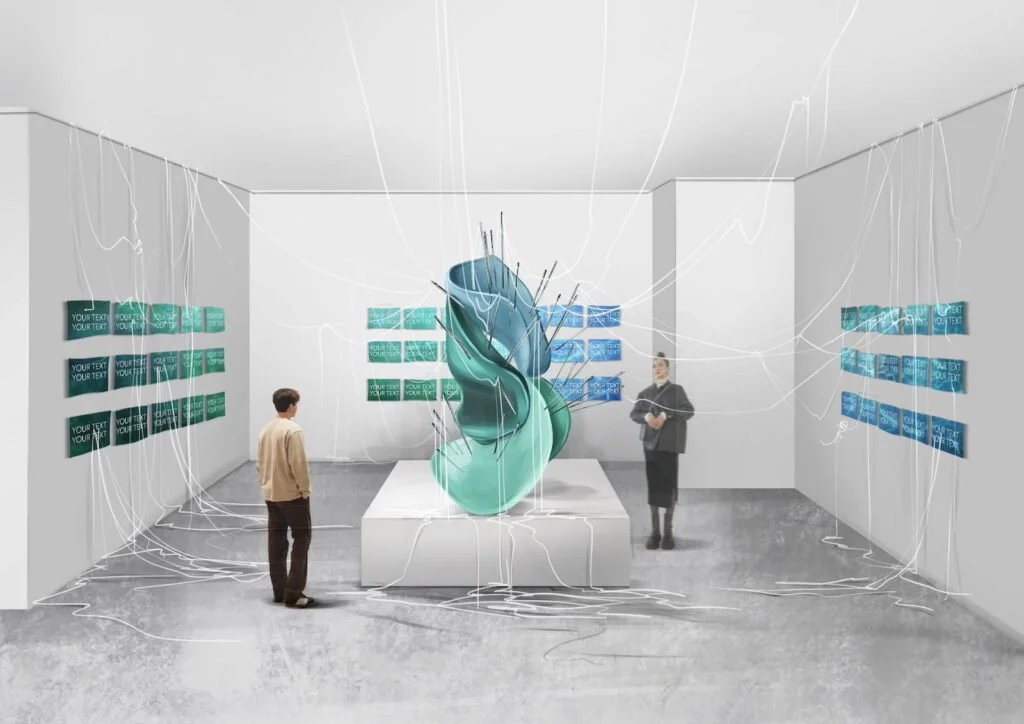Artist in conversation: Alina Tacmelova
“I believe addressing mental health issues is crucial for society, even on a global scale, as it paves the way for a better future”
Alina Tacmelova, a visionary artist and transformational coach, has dedicated her life to understanding the human condition. Her work in coaching and psychology has imprinted a profound understanding of human resilience and complexity into her life's tapestry. In her art installations, Tacmelova employs a unique approach dubbed "Sensory Alchemy". She creates multi-dimensional environments that invite participants to explore their inner selves on various sensory levels. Each project involves meticulous planning and intuitive design, blending sight, sound, touch, and emotion into an intricate dance of personal exploration.
Tacmelova's installations serve as sacred spaces for individuals to confront challenges, explore emotions, and cultivate resilience. Each project mirrors a coaching session without her direct participation, allowing viewers to immerse themselves in a therapeutic experience. Her goal is to harness the visual form to guide individuals towards self-awareness and personal transformation. Through her work, Tacmelova demonstrates how art can serve as a portal to self-discovery, inspiring individuals to unlock the secrets of their own personal alchemy.
What initially inspired you to become an artist, and how did you develop your unique style?
My goal was to create a link between art and mental health issues, recognizing the potential of art to engage a wider audience with psychological concerns. In crafting my unique visual style, I aim to merge the expressive qualities of visual, even conceptual art, with insights from psychology and psychotherapy. This approach places the viewer at the forefront of my projects, introducing a gamified aspect to art. I find this method particularly compelling as it empowers viewers to craft their own narratives while interacting with the project.
In terms of subject matter, what themes or motifs do you frequently explore in your work, and what draws you to these topics?
My professional background as a transformational coach and my involvement with supporting HIV-positive individuals have deeply intertwined my life with mental health. For over eight years, I've been exploring this area through my own research, which forms the core theme of my projects. I believe addressing mental health issues is crucial for society, even on a global scale, as it paves the way for a better future.
How do you navigate the balance between self-destruction and re-creation as a way towards conscious Happiness?
My art explores the connection between our subconscious and the inhibiting phrases that prevent us from being true to ourselves. It offers a moment to pause, self-reflect, greet our inner selves, and recognize how external opinions and imposed phrases can be harmful, understanding their impact on our thoughts and decisions. This awareness can transform our lives, encouraging us to heed our inner voice and desires more.
Your approach involves merging psychological insights with artistic creativity. Could you walk us through the process of translating psychological concepts into visual installations? How do you choose the elements, such as sound, video, and mirroring, to create an immersive ambiance that resonates with the psychological themes you want to convey?
In my visual expression, I bring to light what is typically hidden. The phrases and frameworks in my art, inspired by On Kawara's style, are impersonal, emphasizing the thoughts in our minds rather than their originators. By exaggerating these internal voices, I highlight their potential harm and how they can mislead us, depicting characters lost in a labyrinth. This may appear nightmarish, but it symbolizes the journey to self-discovery – where finding oneself leads to freedom from external influences, and the labyrinth of confusion disappears.
Your art is described as a transformative catalyst, aiming to reach human hearts through installations and performances. Can you share a specific project or artwork that you feel exemplifies this transformative quality, and how did it impact the viewers' introspection and emotions?
Observing people interact with my project at a cultural center, I noticed many resonated with phrases reminiscent of those from parents or teachers. The moment of breaking these negative connections brought visible relief. This transformation – identifying and detaching these 'mental bags' – has been a profound experience for many participants.
How do you incorporate feedback from critics and audiences into your artistic practice, and how do you balance this feedback with your own artistic intuition?
The feedback I've received aligns with my goals and has been predominantly positive. Seeing the emotional responses, sometimes even tears, as people engage with my work, reassures me of its impact. Collaborating with art specialists and curators, we use this feedback to refine the projects, believing this to be the best approach to handle responses.
How do you stay motivated and inspired despite any setbacks or creative blocks you may encounter?
The underlying idea and its potential to introduce something fresh to the world and visual art is my main inspiration. In a time when old methods are failing and new ones are struggling to emerge, my aim is to bridge this gap, bringing positive change and finding great inspiration in this process.
How do you feel about exhibiting your artworks with The Holy Art Gallery?
I am thrilled about the opportunity to present my work to a broader audience, seeing this as a significant step in my artistic journey.
Looking ahead, what are your long-term goals and aspirations as an artist, and how do you plan to achieve them?
Currently, my primary goal is to transition my installation into a physical gallery setting, while also contemplating a deeper second phase of the project. Collaborations with mental health centers, commercial galleries, and non-profit art organizations, along with participation in major group exhibitions in Europe and the USA, are on my agenda. I am making steady progress towards these objectives, taking small steps every day.
What role does emotion play in your creative process, and how do you aim to evoke specific feelings or reactions from those who view your drawings?
Emotions are central to my work, as they are intrinsically linked to mental health. The ability to manage emotions is key to making deliberate actions and choices.




